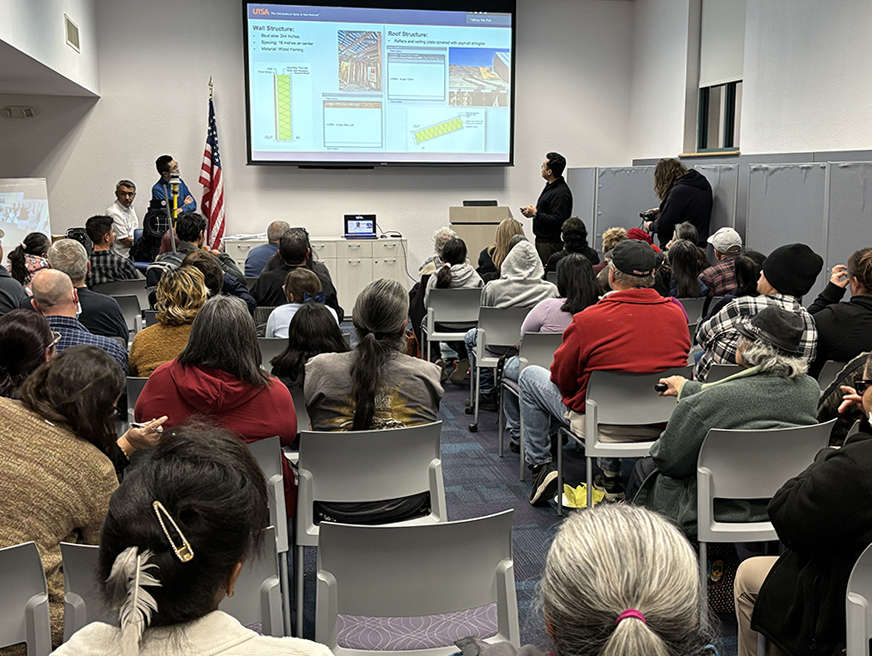
CURPR Hosts Community Meeting on Urban Heat Island Solutions
January 14, 2025
Led by principal investigator Wei Zhai, PhD, CURPR researchers hosted a successful community meeting with 88 attendees to discuss innovative solutions for urban heat islands. Co-presenters Esteban Lopez Ochoa and Farzad Hashemi introduced sensor and digital twin applications, generating strong community interest in installing home sensors. The event, held at Bazan Library, was organized in collaboration with the Historic Westside Residents Association. The research team collected over 50 survey responses to strengthen the Stage 2 proposal to the National Science Foundation, which will emphasize digital twin technology and home rehabilitation. Stay tuned for updates!

CURPR Presents Downtown Revitalization Plans for Freeport, Texas
November 4, 2024
Ian Caine, Director of the Center for Urban and Regional Planning Research (CURPR), presented a Comprehensive Downtown Plan and Historic District Design Guidelines to Freeport’s Mayor and City Council. Developed over nine months with extensive community input, the plans address economic disinvestment and physical decline in the historic coastal city. The vision outlines actionable goals in historic preservation, economic development, land use, infrastructure, and ecology, supported by six Catalytic Projects to drive tangible outcomes. These plans aim to revitalize Freeport’s downtown, preserving its rich history while fostering sustainable growth.
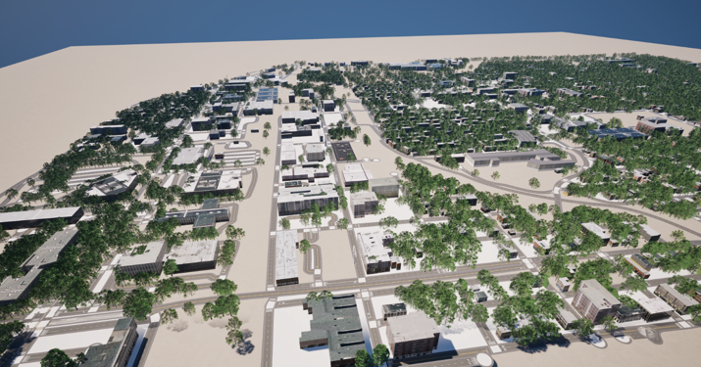
NSF Funds UTSA Effort to Advance Ethical Urban Digital Twins
October 1, 2024
The National Science Foundation has awarded funding to a UTSA-led team to address ethical concerns in Urban Digital Twins. The project focuses on improving communication with disadvantaged communities, ensuring the ethical use of responsible AI and privacy-preserving sensors, and leveraging digital twin models to combat urban heat island effects.
Led by Drs. Wei Zhai, Esteban López Ochoa, RJ Lee, Paul NajafiRad, Farzad Hashemi, and Neil Debbage, UTSA is partnering with Texas A&M University, led by Dr. Xinyue Ye, and the San Antonio Historical Westside Residents Association. Prototypes will be developed in San Antonio’s Westside, building on community sensor work from the UTSA Connect project. Support from the City of San Antonio will play a key role in advancing this initiative.

UTSA Researchers Join NSF-Funded Urban Digital Twins Project
September 1, 2024
A team of researchers from Prairie View A&M University, the University of Texas at San Antonio (UTSA), and Texas A&M University has secured a National Science Foundation grant to advance research and education in implementing urban digital twins using responsible AI techniques. The UTSA team is led by Dr. Wei Zhai and Dr. Esteban López Ochoa from the School of Architecture + Planning. Their work uses multimodal foundation models to integrate social system data with urban and climate sensors. The initiative aims to foster disciplinary collaboration, engage underrepresented students in research, and prepare a skilled workforce to address national challenges.

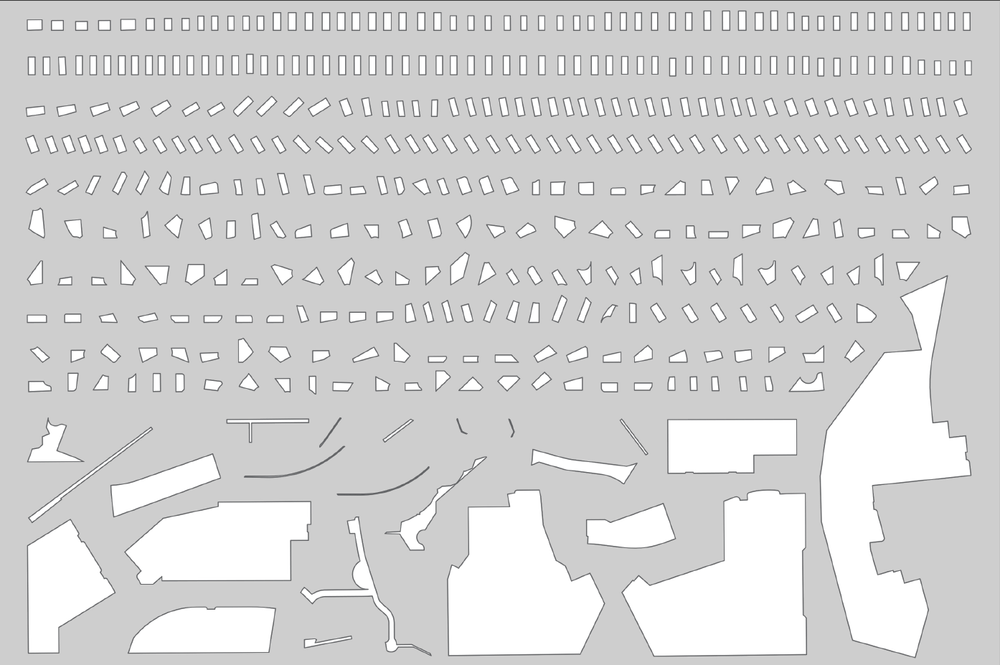
SOM Foundation Awards National Research Prize to CURPR
February 14, 2024
A University of Texas at San Antonio (UTSA) research team has been honored with the SOM Foundation’s 2023 Research Prize for its proposal titled "A Taxonomy of Vacancy: Are Underutilized Commercial Strips the Answer to San Antonio’s Housing Shortage?"
Led by Ian Caine, the team consists of Wei Zhai and Esteban López Ochoa from the UTSA School of Architecture + Planning, Rudy Niño, Jr. from the City of San Antonio, and Christine Quattro from Appalachian State University. The project explores how vacant or underused commercial parcels can be reimagined as multifamily housing. With a $40,000 grant from the SOM Foundation and additional support from the City of San Antonio, the team will combine data analysis and design thinking to develop innovative policies and typologies to address San Antonio’s housing crisis. This research coincides with broader efforts to accommodate a projected influx of over one million people into Bexar County, underscoring the urgency and relevance of the work.
This year’s jury included Iker Gil, Executive Director, SOM Foundation, Chicago; Carlos Bedoya, Cofounder, PRODUCTORA and Founding partner, LIGA, Space for Architecture, Mexico City; Johanna Hurme, Cofounder, 5468796 Architecture, Winnipeg; Lorcan O’Herlihy, Founding Principal and Creative Director, Lorcan O’Herlihy Architects [LOHA], Los Angeles and Detroit; and Irene Sunwoo, John H. Bryan Chair and Curator of Architecture and Design, The Art Institute of Chicago, Chicago.
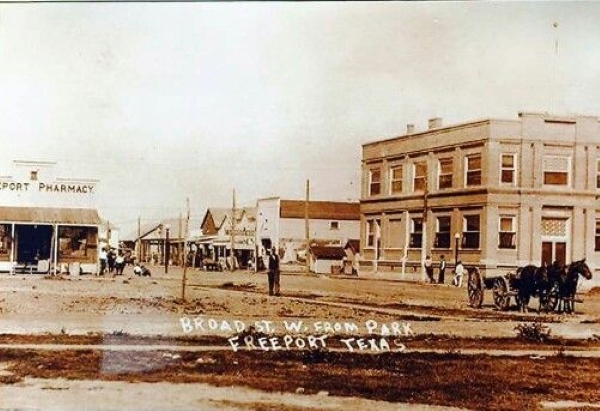
Center Partners with the City of Freeport, Texas to Develop New Downtown Plan
January 15, 2024
We are thrilled to announce that the Center for Urban and Regional Planning Research is partnering with the City of Freeport to develop a Comprehensive Downtown Plan. Freeport, Texas, a coastal city in Brazoria County with 10,696 residents, was established in 1912 by the Freeport Sulphur Company and is now home to the Dow Chemical Company's Texas Operations facility. This comprehensive plan will tackle crucial aspects such as economic development, land use, zoning, infrastructure, and environmental sustainability. A pivotal facet of this project is the formulation of Historic District Guidelines, which will seamlessly project the city's architectural legacy into a forward-looking vision. This planning process will actively engage the community, serving as a compass for decision-making and igniting community action.
Stay tuned for updates as Freeport embarks on this transformative journey, ushering in a promising future that honors its past!
City of Freeport Post Oak Preservation Solutions LABor Studio
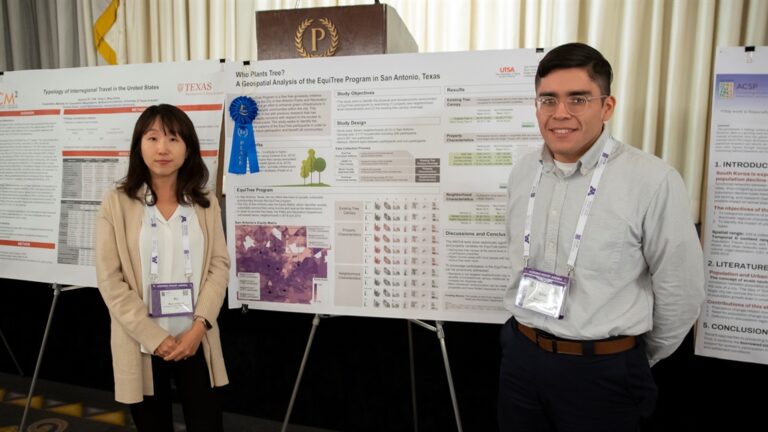
Professor Lee and Students Recognized for Best Poster Presentation at National Conference
November 1, 2023
Sam Rueda, a master’s student in urban and regional planning, led an award-winning poster presentation at the esteemed Association of Collegiate Schools of Planning conference in Chicago, Illinois. Under the mentorship of Dr. Ryun Jung Lee, the research team highlighted a comparative analysis between EquiTree participants and non-participants, offering invaluable insights into property and neighborhood characteristics. This recognition underscores the program's commitment to environmental justice and equitable community development.
The EquiTree Program, managed by the City of San Antonio Parks and Recreation Department, aims to address equity concerns surrounding access to green spaces, with a focus on enhancing urban greenery in underserved areas.
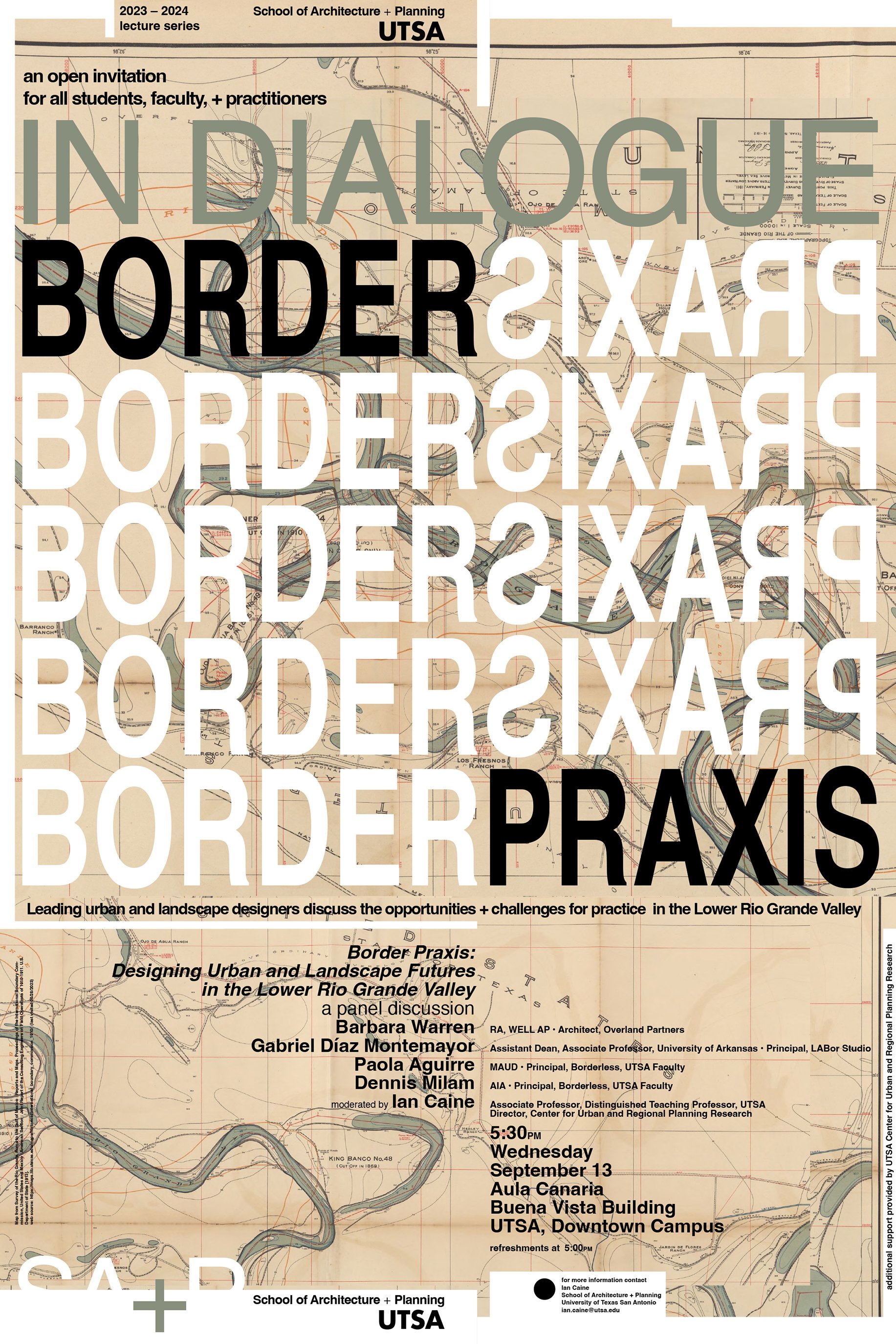
Center Hosts Border Praxis Panel with Leading Urban Designers
September 13, 2023
Center Director Ian Caine moderated a panel titled Border Praxis: Designing Urban and Landscape Futures in the Lower Rio Grande Valley. Panelists included leading urban and landscape designers from the United States and Mexico:
Gabriel Díaz Montemayor, MLA, Assistant Dean for Diversity, Equity, and Inclusion, Associate Professor of Landscape Architecture, University of Arkansas, Principal, LABOR Studio
Paola Aguirre, MAUD, Principal, Borderless Studio
Dennis Milam, AIA, Principal, Borderless Studio
A lively discussion ensued as the panelists explored the following topics related to urban design practice in the LRGV:
+ Border
+ Scale
+ Agency
+ Space
+ Security
+ Porosity
+ Praxis
Thanks to all that attended!
The event was sponsored by the UTSA School of Architecture + Planning with support from the Center for Urban and Regional Planning Research.
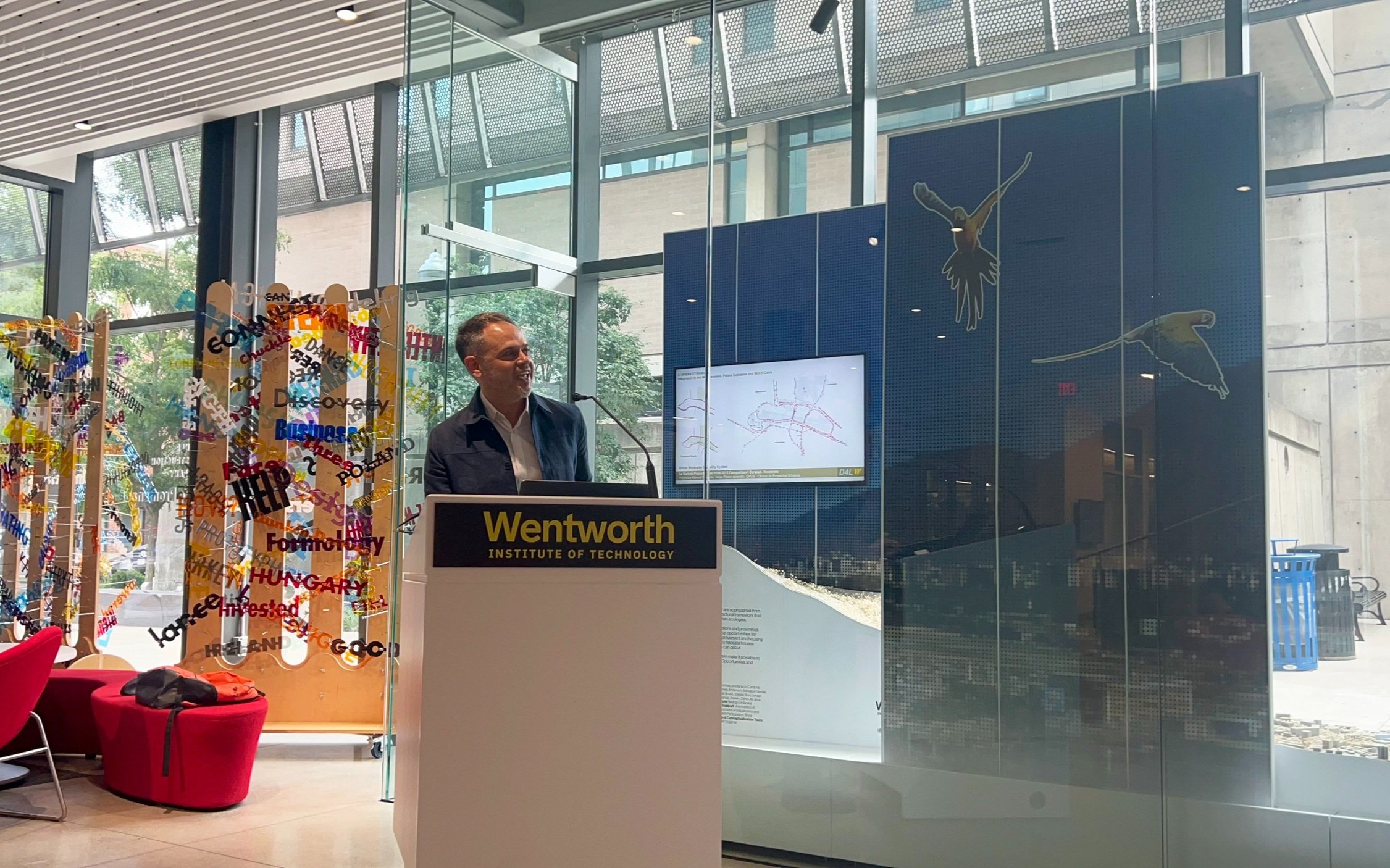
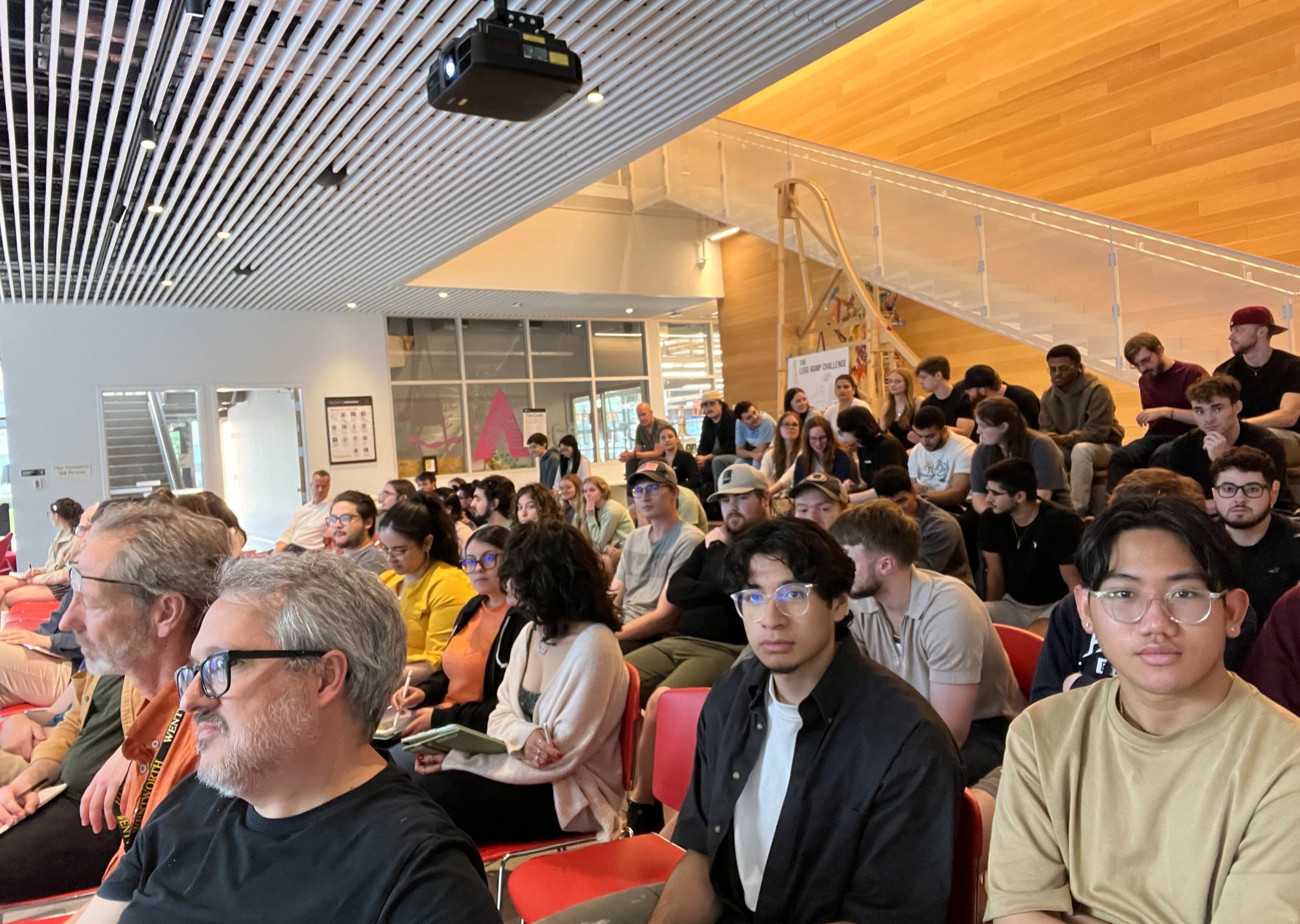
Caine Discusses Urban Context at Wentworth Institute of Technology
June 29, 2023
Thank you to Dean Sedef Doganer and the fantastic students and faculty at Wentworth School of Architecture & Design for the invitation to come and speak! I presented a talk titled “On Context in Urban Design” which explored the phenomenon of urban context using the following:
+ four scales
+ four projects
+ four observations
For urban designers, establishing an authentic relationship with context means engaging the city on its own terms. It means understanding the complex interaction between form and policy. It means developing strategic interventions that can create real impact. It means engaging the mechanisms that catalyze, finance, and regulate urban growth. It even means that, sometimes, we have to surrender our preferred role as form-givers.
Great conversations, wonderful space, bustling city, fun evening!
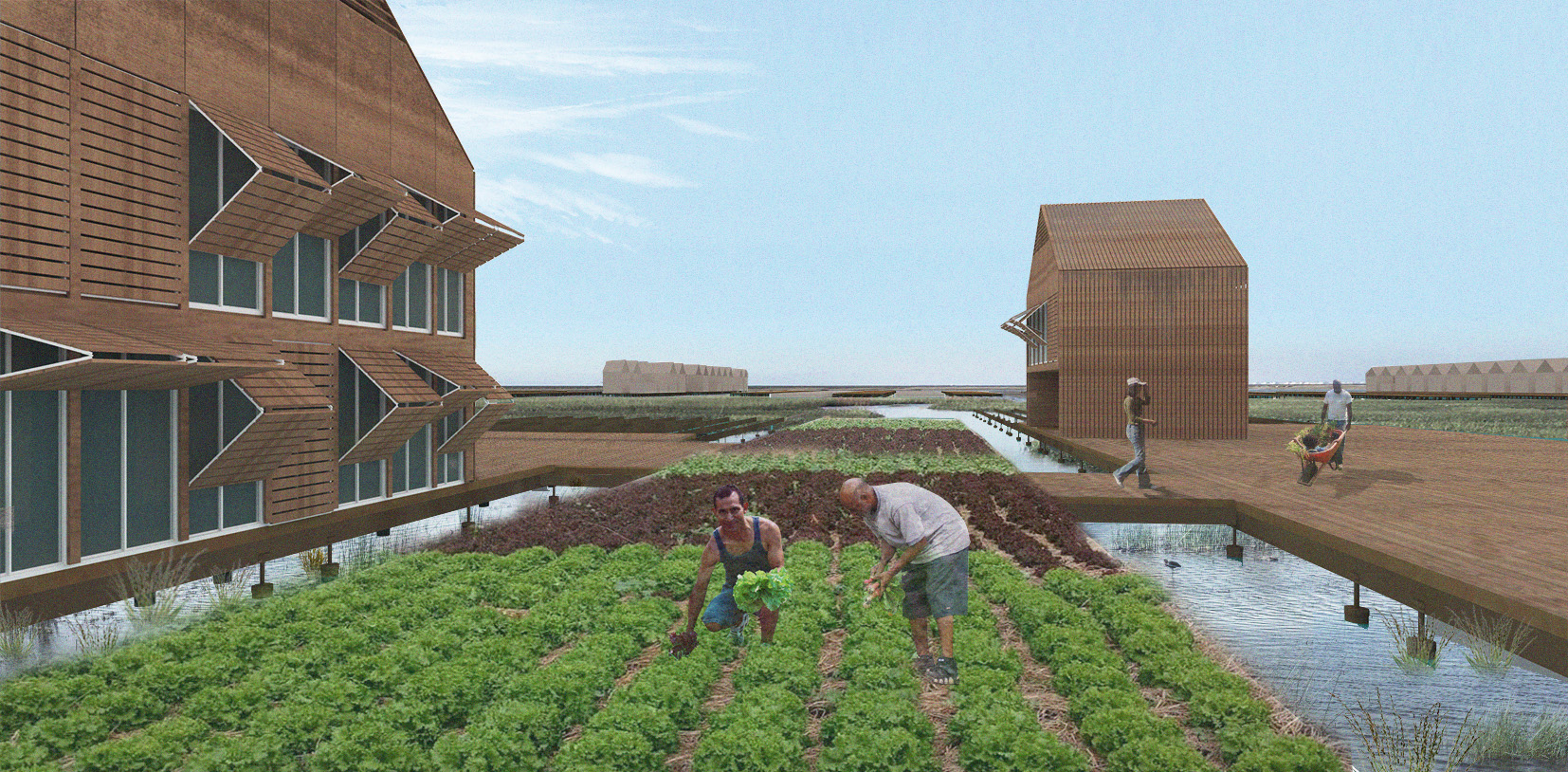
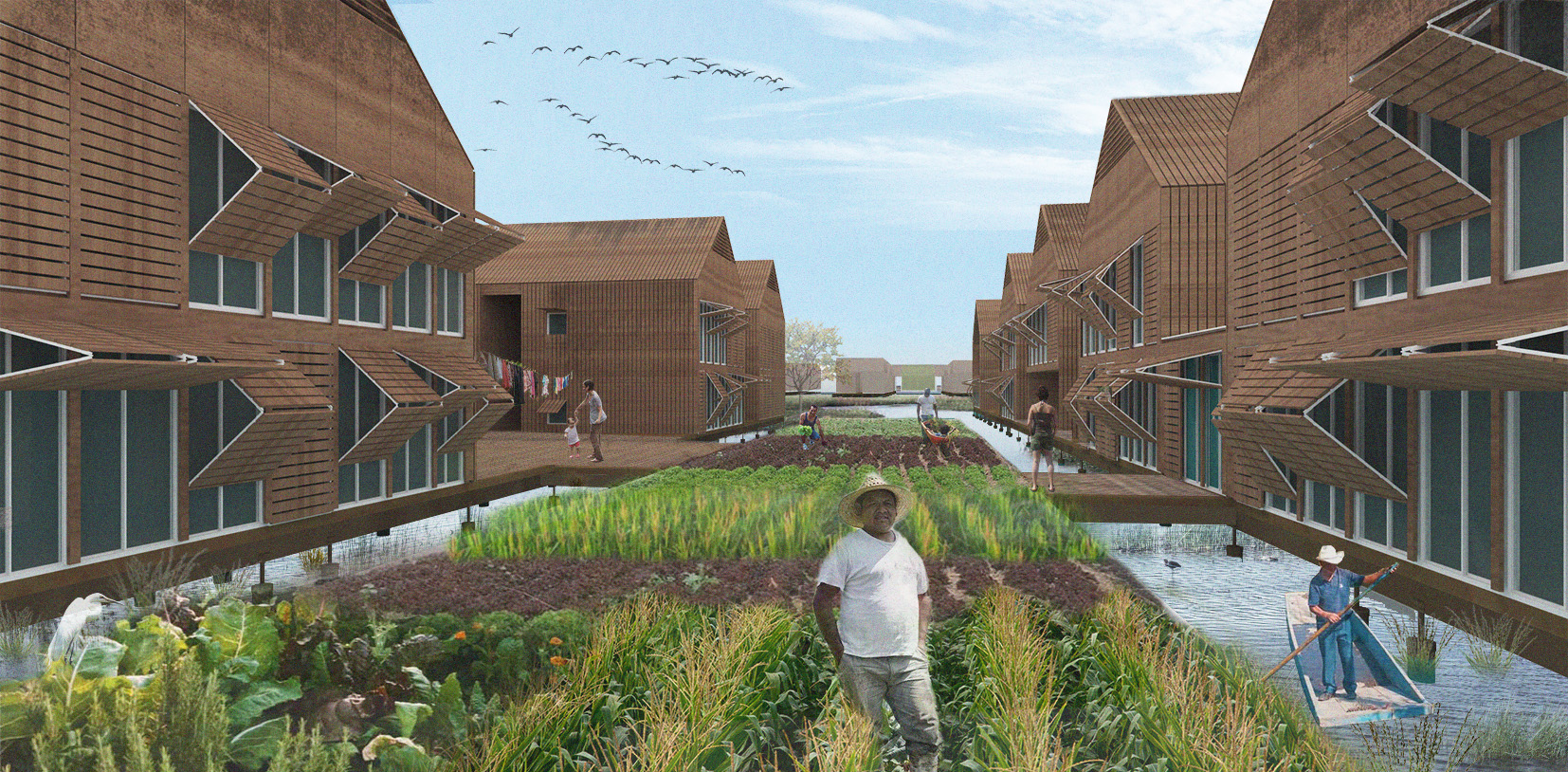
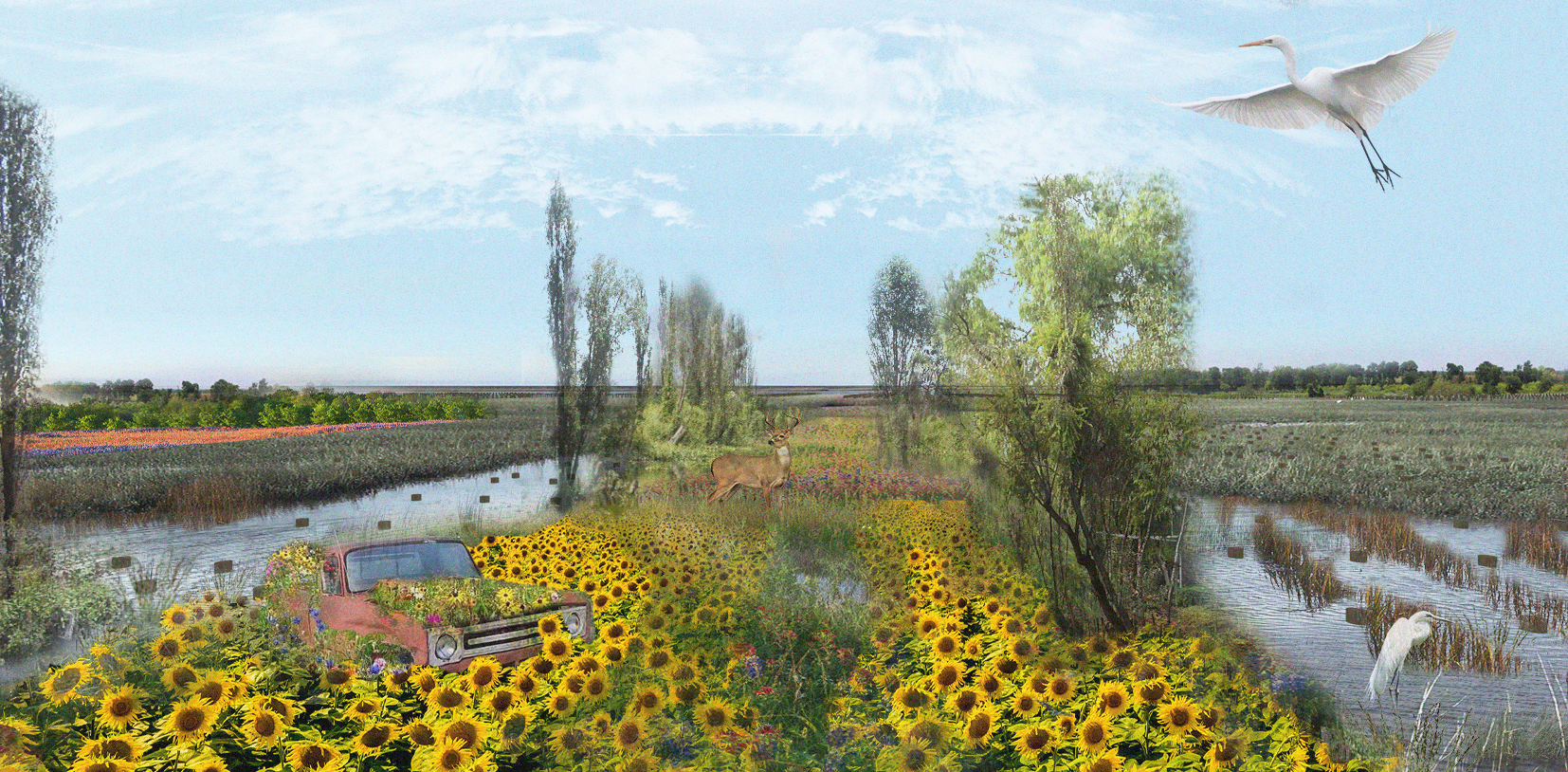
Design Proposal Shortlisted for International Housing Award
August 1, 2022
A jury of leading architects has shortlisted for the Center design proposal for an international housing award. The Second Annual Modular Home International Competition, sponsored by Buildner, asked participants to submit innovative design proposals for modular housing sites across the globe. Modular systems offer flexible, efficient, and sustainable solutions to the contemporary housing crisis.
The Center’s proposal, developed in collaboration with landscape architect Gabriel Díaz Montemayor, Founding Partner of LABor Studio, is located in the Rio Grande Valley, a transborder region that lies in the floodplain of the Rio Grande/Rio Bravo River adjacent to the Mexican State of Tamaulipas. The region is home to more than 2,000 colonias–informal, unincorporated settlements that flood regularly and lack civil infrastructure such as sewer systems, paved roads, and potable water. In Texas, 400,000 people live in colonias. Many are migrant workers from Northern Mexico who come for seasonal agricultural jobs. The Center’s submission imagines a farming cooperative that extends modular efficiencies beyond housing to the entire site, unitizing the subdivision of land, utilities, flood control, and food production.
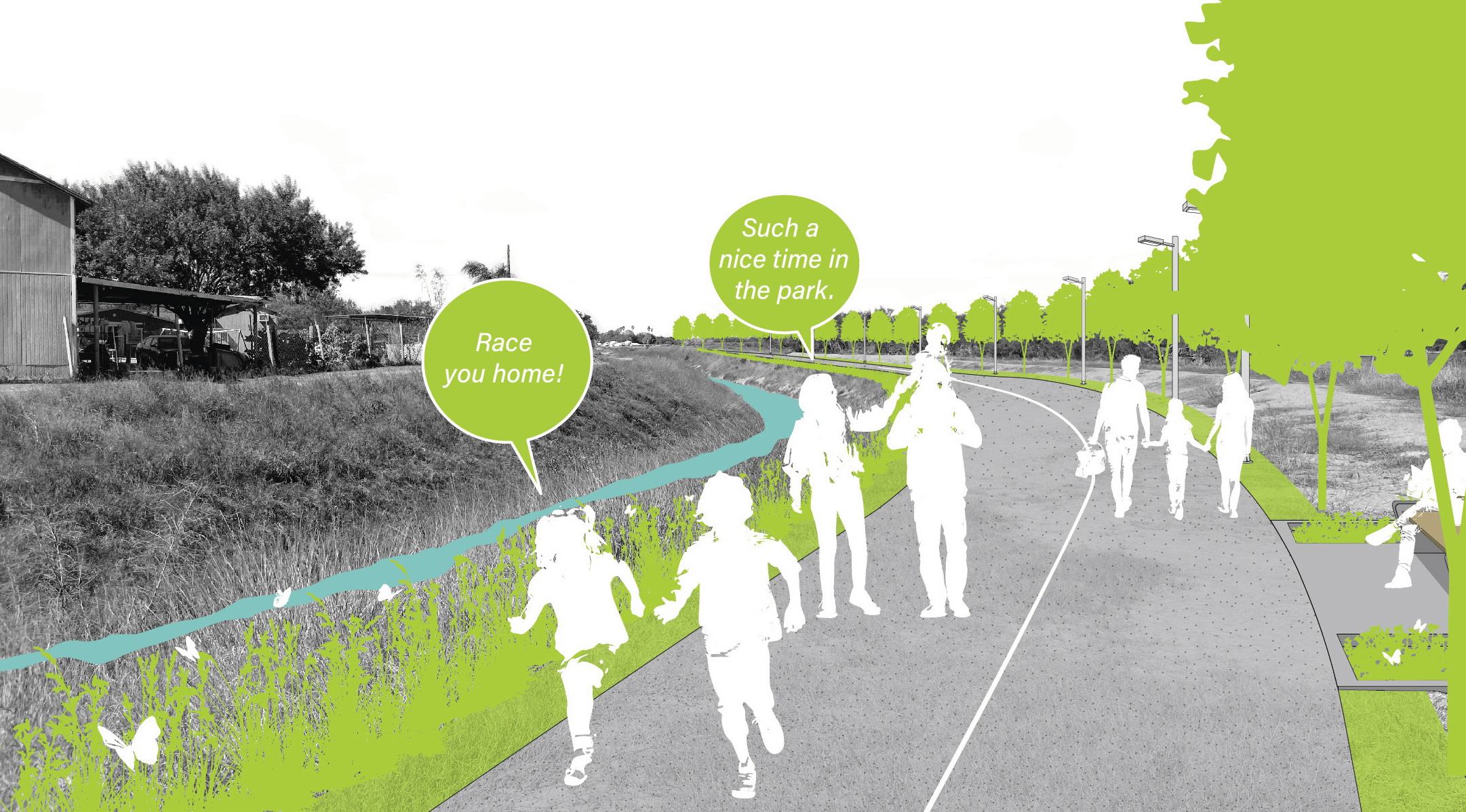
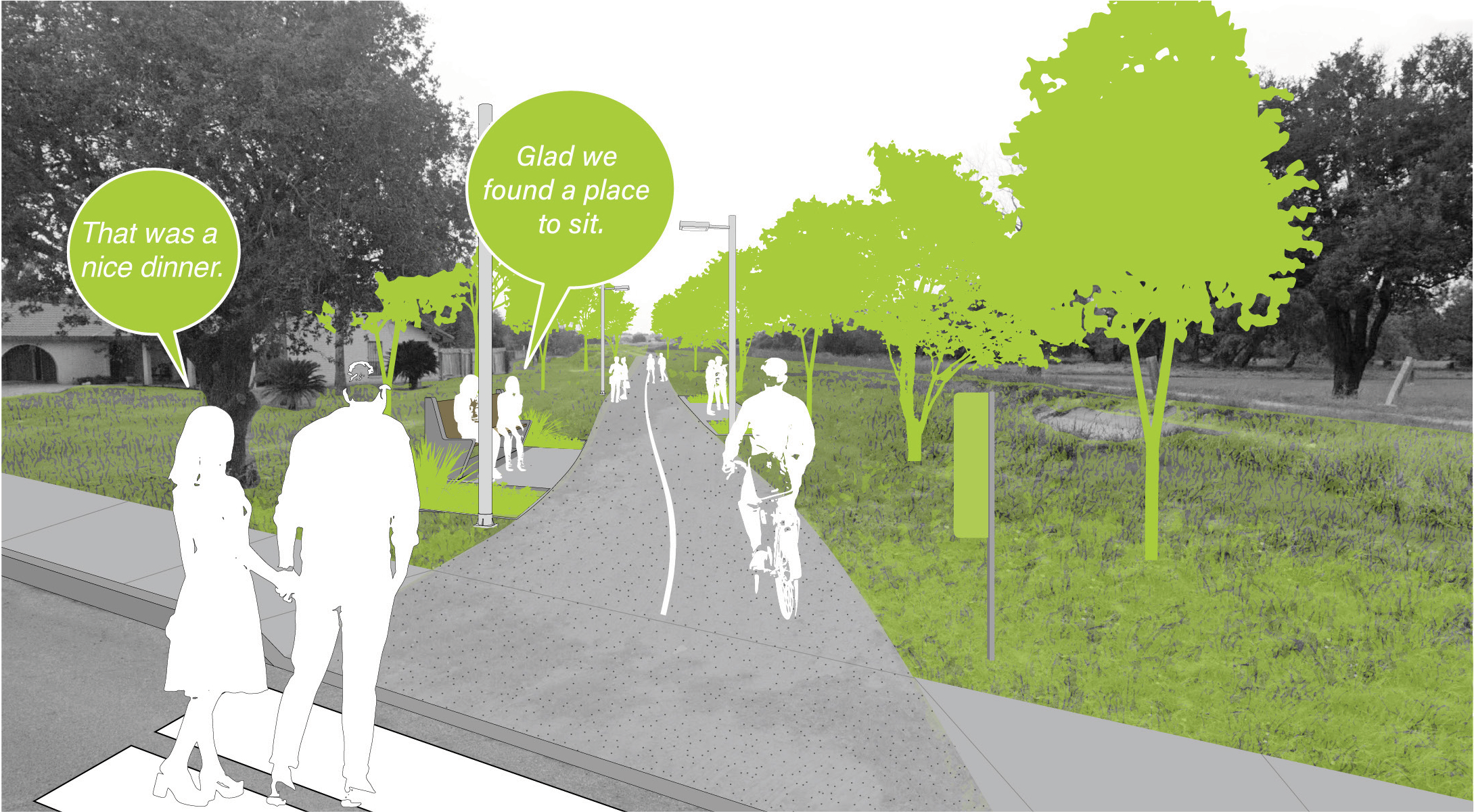
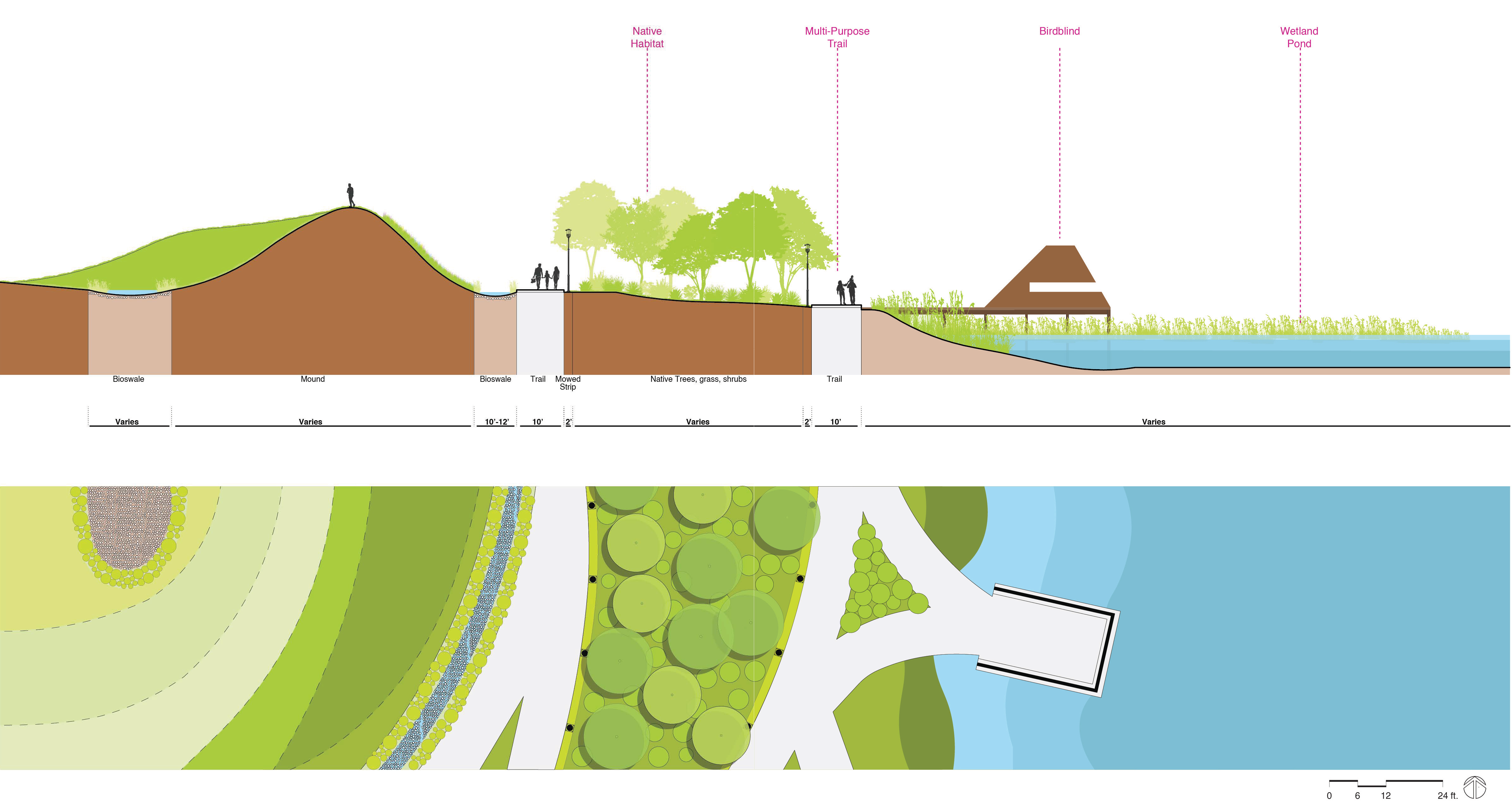
Weslaco City Commission Unanimously Approves New Comprehesive Plan
July 5, 2022
The Weslaco City Commission unanimously approved the Center’s 2022 update to the City’s Comprehensive Plan. The new document, which establishes a framework for community decision-making through the year 2045, represents sixteen months of collaboration between Weslaco city leaders, UTSA faculty, and Gabriel Díaz Montemayor, Founding Partner of LABOR Studio. Weslaco’s 2022 Comprehensive Plan redefines the City of Weslaco’s growth calculus, expanding the community motto, “City on the Grow,” to include infill, redevelopment, and retrofit strategies. The 2022 Plan prioritizes three critical policy areas:
Land use planning: The Plan seeks to densify existing neighborhoods with targeted infill development on vacant parcels, especially along transportation corridors and neighborhood seams. It also provides guidelines to revise Subdivision Regulations–promoting integrated street networks, multifamily housing, integrated stormwater management, and park access.
Historic preservation: The 2022 Plan maximizes local cultural, physical, and environmental character while safeguarding against residential displacement and loss of historic fabric. This involves reestablishing Downtown as a destination with a submission to the National Register of Historic Places.
Integrated Stormwater Management: The 2022 Plan leverages Weslaco’s already-significant investment in flood control infrastructure by proposing an integrated recreational trail and park network that leverages drainage ditches, irrigation canals, and regional detention facilities.
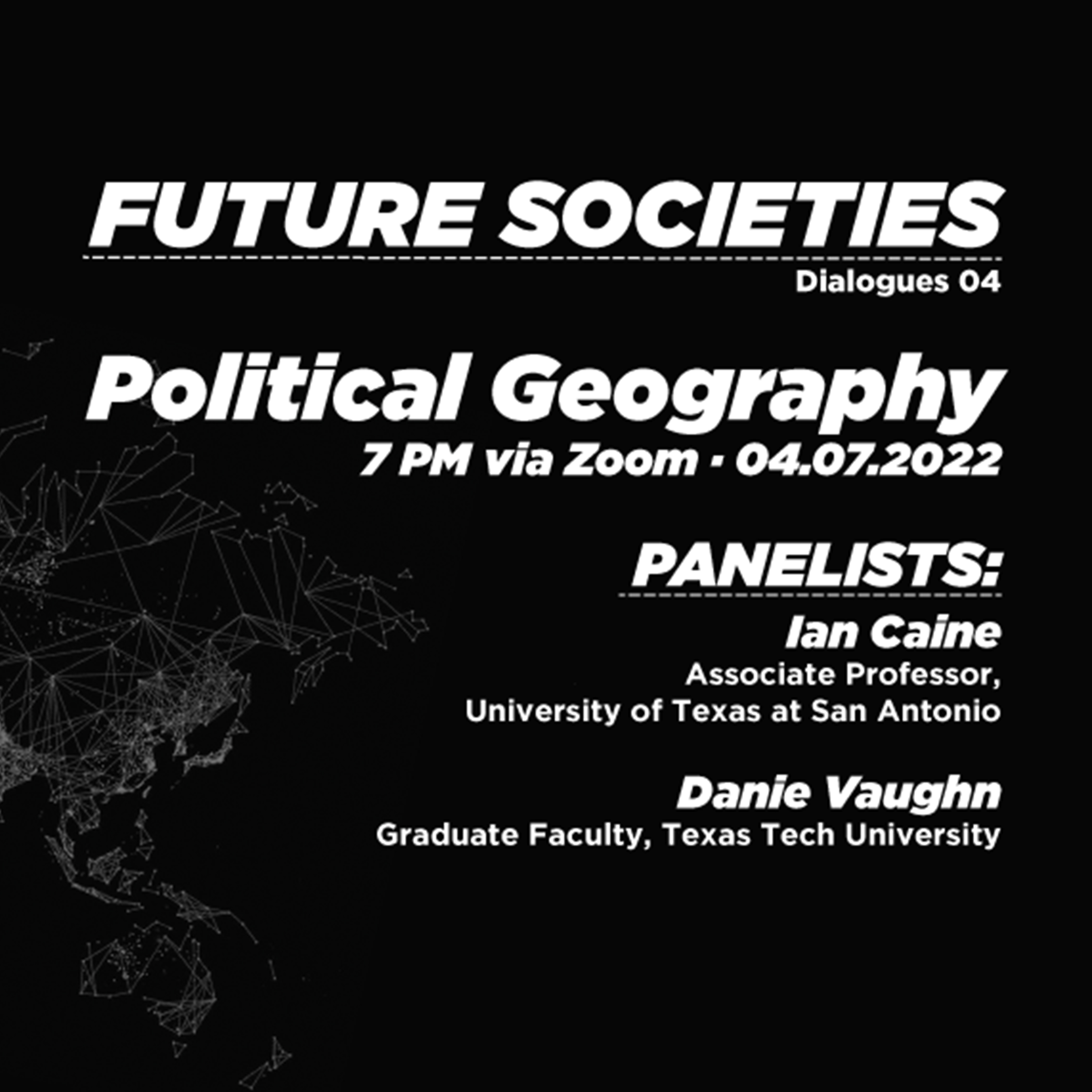
Ian Caine Debates Political Geography at Texas Tech CoA
April 8, 2022
Ian Caine participated in the Texas Tech College of Architecture’s student-run debate series, CoA Dialogues. Amazingly, this student-run series has been up-and-running for over a decade. This year’s theme is Future Societies, featuring discussions on Equity, Environment, Histories, and Political Geography. Professor Caine and Texas Tech faculty Danie Vaughn had a wide-ranging conversation on the topic of Political Geography, probing the relationships between urban development, capital, ecology, rhetoric, policy and of course design. Topics included Walmart, Stormwater, Elon Musk, Houston, West Texas, and the Rio Grande Delta. Excellent questions and comments from a small but highly engaged group of students. Thank you to Dr. Jeffrey Nesbit, Grace Shanks, and Texas Tech for the invitation!

Why is San Antonio the Least Walkable Major City in the U.S.?
December 15, 2022
A recent Walk Score survey named San Antonio as the least pedestrian-friendly large city in the U.S. Ian Caine reflected on this troubling outcome with reporter Shepard Price from the San Antonio Express-News:
San Antonio's low overall score is of no surprise to Ian Caine, an associate professor at the University of Texas at San Antonio and director of the school's Center for Urban and Regional Planning Research. Caine said "2,000 miles of sidewalks are either missing or broken" in the city.
“San Antonio residents know from experience that large portions of their city are not very walkable, especially outside of the historic core," Caine said in an email to the Express-News.
Caine also noted that the low walkability of San Antonio is reinforced by data and is in part due to the city's growth timeline, which "accelerated dramatically" after World War II, during the period of urban sprawl. Many characteristics associated with sprawl, like scattered development patterns, widespread single-use zoning and low-density neighborhoods can make cities less walkable, Caine said.
To improve its Walk Score, Caine said the city needs to invest in an integrated system of streets with shaded sidewalks and pedestrian-friendly intersections, safe bike lanes and increased transit options.
“(San Antonio) will have to build more medium-density, mixed-use and compact urban neighborhoods like the ones it developed during the first half of the twentieth century," Caine wrote.
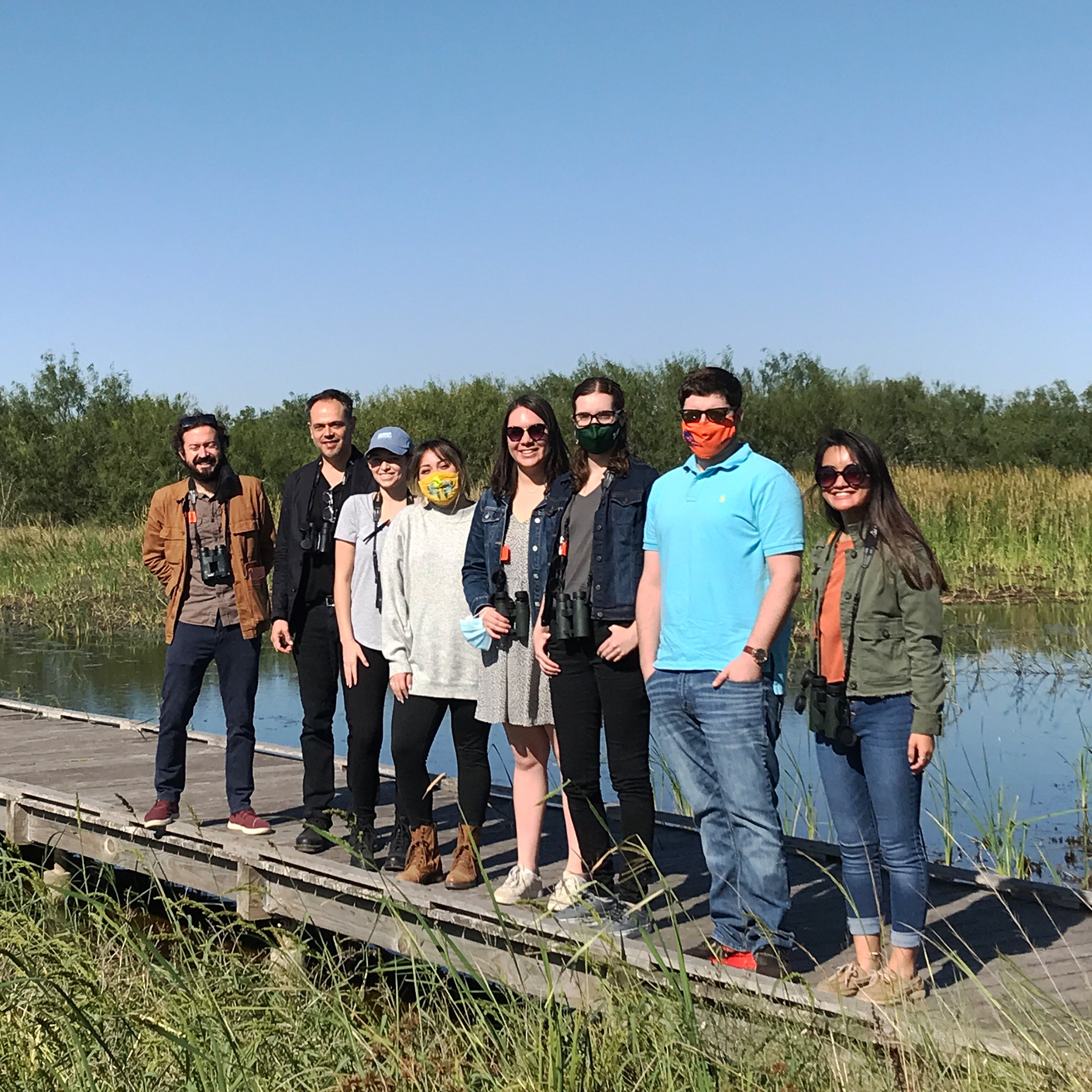
Studio visit to Estero Llano Grande State Park. Image: CURPR.
UTSA Students Visit Rio Grande Valley to Study Modular Housing
November 1, 2021
Graduate students from the School of Architecture + Planning traveled to Weslaco, Texas with Associate Professor Ian Caine to examine modular housing in a regional context. The fall 2021 studio, part of a semester-long transdisciplinary collaboration with University of Arkansas landscape faculty Gabriel Diaz Montemayor, is examining modular housing across regional, metropolitan, neighborhood, and building scales. During the trip, UTSA students met with city officials and visited mobile home parks, wetlands, flood plains, levees, and bird blinds. Students will submit their final studio results to the Annual International Architecture Modular Home Competition in May 2022.
The studio curriculum builds on an actual community design effort that Caine, Diaz Montemayor, and the Center researchers are leading in the City of Weslaco, Texas, a city of 41,000. Weslaco is located in Hidalgo County, one of three counties in the Lower Rio Grande Valley, a transborder region is located in the floodplain of the Rio Grande River and adjacent to the Mexican State of Tamaulipas.

Ian Caine Discusses San Antonio's Rapid Urban Growth with the New York Times
October 5, 2021
One of fastest growing and oldest cities in the United States, San Antonio faces continuous pressure to embrace economic development while preserving culture. The City expects to add one million residents by 2040, yet faces a severe shortage of affordable housing. Ian Caine recently discussed these issues with the New York Times.
“San Antonio has a wonderfully preserved historic downtown, an historic building stock and the River Walk, and that’s the image the city projects to the world,” said Ian Caine, the director of the Center for Urban and Regional Planning Research at the University of Texas at San Antonio. “And then on the other hand, it’s one of the fastest-growing cities in the U.S., famously bicultural and minority-majority, and one of the most segregated and poor cities in the U.S.”
“As San Antonio moves forward, it’s trying to make sense of these competing histories,” he added.
Much of San Antonio’s recent growth was catalyzed by the Decade of Downtown, a 2010 initiative championed by former Mayor Julián Castro. As the City heads into a new decade, it must confront multiple challenges that come with development, including issues of affordable housing, gentrification, gridlock, and aquifer protection.

UTSA Researchers Discuss Weslaco's Future with City Officials and Residents
June 30, 2021
During the month of June, the Center facilitated three public focus groups in Weslaco, Texas to discuss the critical topics of downtown revitalization, housing, and parks & recreation. These focus groups–which ran in both physical and virtual format–gave residents and city officials a chance to discuss the opportunities and challenges facing their community. The feedback will allow the Center to put local opinions into action while updating the City’s Comprehensive Plan. The Center’s researchers will continue developing the plan over the summer, present preliminary ideas to the community in the fall, and submit a final updated comprehensive plan in January 2022. Weslaco is a city of 42,000 in the Rio Grande Valley, adjacent to the Mexican State of Tamaulipas. The city is part of the fast-growing McAllen–Edinburg–Mission metropolitan area.

Ian Caine Discusses Urban Growth Strategies for Unincorporated Communities at ACSA National Conference
March 24, 2021
Ian Caine attended the Association of Collegiate Schools of Architecture’s 109th Annual Meeting to discuss a recent urban planning effort in Comfort, Texas. Comfort, like 90% of its neighbors in the Texas Hill Country, does not have a municipal government. The Texas Hill Country region is home to three of the ten fastest growing large counties in the United States, yet the widespread lack of urban planning and environmental regulation today threatens the local quality of air, water, and land. Comfort Vision 2050 offers a plan tailored to the realities of life in an unincorporated community, providing a list of 75 Strategic Initiatives that are small-scale, diverse, and possible to achieve without the benefit of municipal government. The research highlights the need to develop regional planning strategies that can address the needs of unincorporated communities, which after all need urban planning for all the same reasons that cities do: to prevent the fragmentation of local ecologies, maintain critical infrastructures, ensure access to housing, preserve physical and cultural history, attract and keep good jobs, expand critical services, facilitate civic discourse, and ensure timely decision-making.

APA Honors Grassroots Planning Effort in Comfort, Texas
October 14, 2020
UTSA’s Center for Urban and Regional Planning Research has been recognized for helping a small Texas community make big plans for its future. The Texas Chapter of the American Planning Association last week presented the plan—titled “Comfort Vision 2050”—with the Grassroots Initiative Award, one of just 15 Planning Achievement Awards for the year 2020. The Grassroots Initiative Award specifically honors an effort “that illustrates how a neighborhood, community group or other local nongovernmental entity utilized the planning process to address a specific need or issue within the community.”
Ian Caine led the planning team, which included William Dupont, professor of architecture; Corey Sparks, associate professor of demography; researcher Bill Barker; and Matthew Jackson and Thomas Tunstall of UTSA’s Institute for Economic Development. Additionally, student researchers Elizabeth Striedel, Ivan Ventura and Diego Sanchez made critical contributions to the drawings and field documentation. Thank you to the Comfort Area Foundation and National Association for Latino Community Asset Builders for initiating the process and to the UTSA team for all of the work. Most importantly, congratulations to the residents of Comfort for making such an important investment in your community’s future! (UTSA Today)


The Center Helps Emerging R&D League Advance Data-Driven Policy
February 1,2020
The Center is proud to participate in the newly formed R&D League, an applied research consortium launched by the City of San Antonio’s Office of Innovation. Participants include UTSA, Southwest Research Institute, and USAA. By leveraging expertise from academia, industry, and government, the R&D League will help City policy-makers advance data-driven, equitable decisions on behalf of its citizens. Ian Caine will work with colleagues from computer science, urban planning, real estate and public health to develop a project titled the Neighborhood Empowerment Zones Impacts Estimator, one of six initial R&D League research efforts. Developed in collaboration with the City's Neighborhood and Housing Services Department, this effort builds an interactive tool to collect data, map trends, and evaluate the impact of affordable housing subsidies.
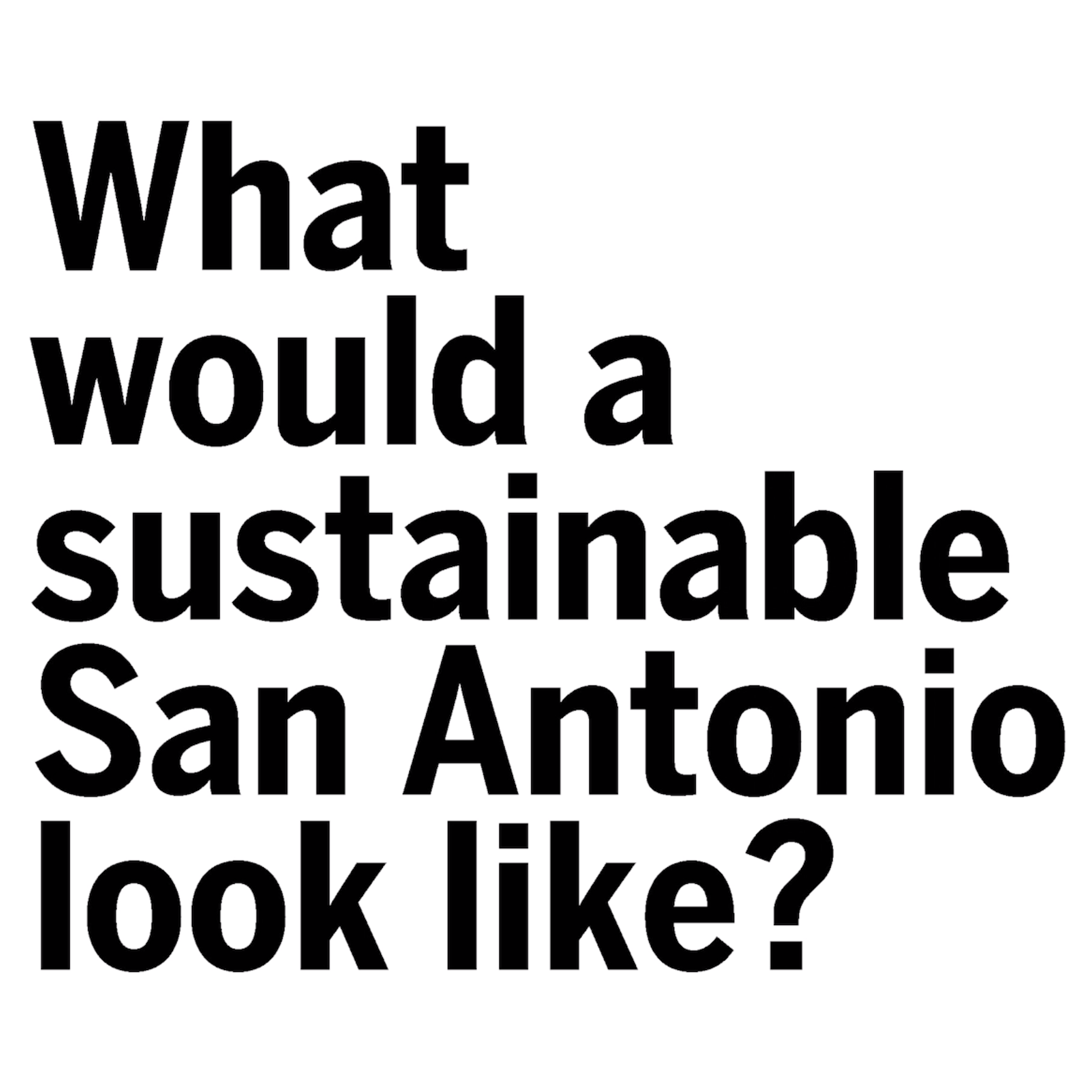
Ian Caine Closes UTSA 50th Anniversary Scholars Speakers Series
December 17, 2019
Ian Caine delivered the final installment of the UTSA 50th Anniversary Scholars Speakers Series, undertaking a broad thought experiment titled What Would a Sustainable San Antonio Look Like?
“When it comes to climate change, cities like San Antonio are both the problem and the solution,” said Caine. “Cities cover less than 2% of the Earth’s surface, yet they produce 60% of the world’s carbon and greenhouse gas emissions. As we consider how San Antonio will respond to the climate crisis, we need to imagine what a sustainable city would look like, how it would work, and mostly importantly who it would serve.”
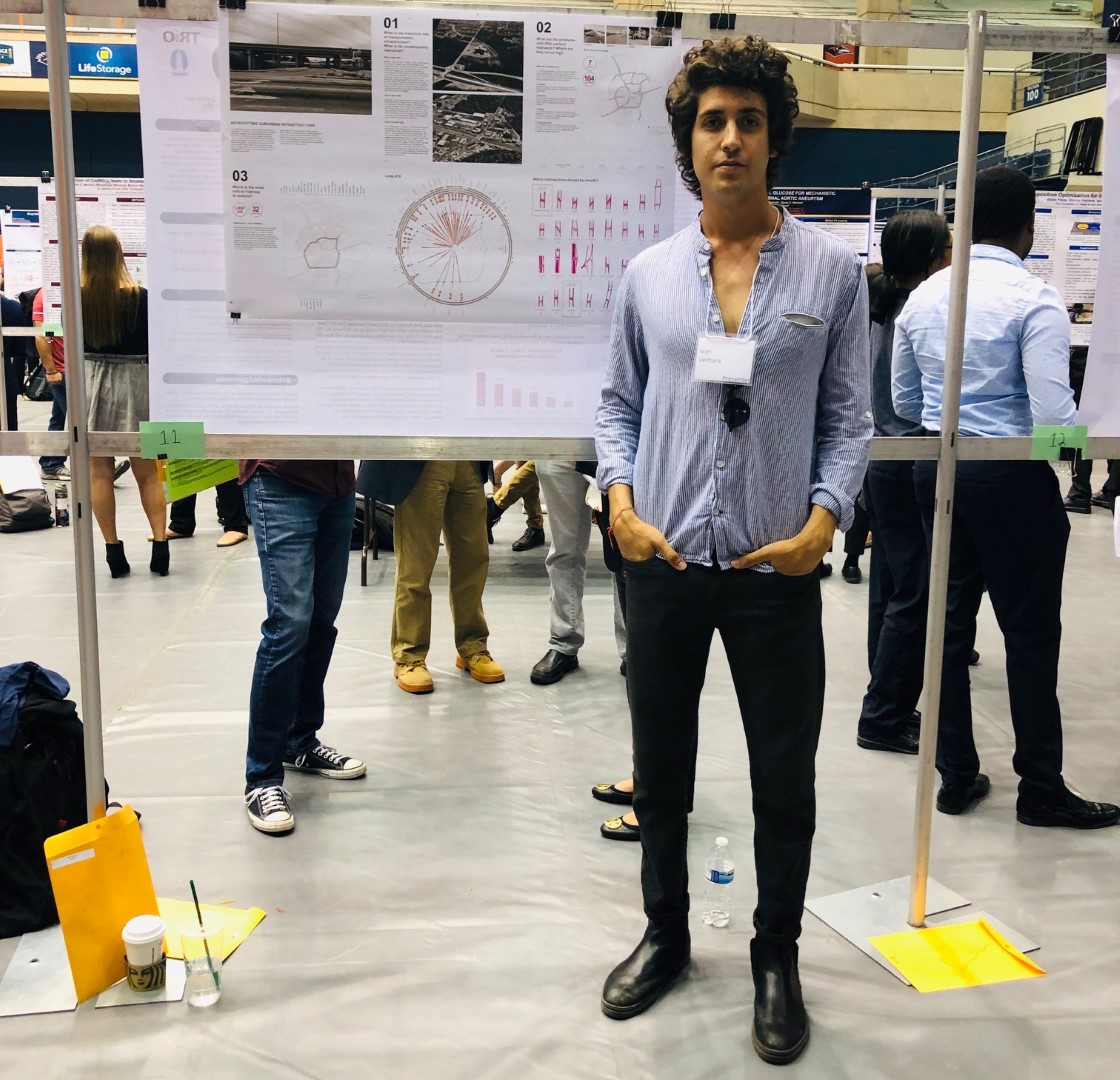
Ventura Wins Best-In-Show at Undergraduate Research Showcase
April 3, 2019
A panel of UTSA faculty recognized undergraduate B.S. Architecture student Ivan Ventura as a winner in the 2019 Undergraduate Research & Creative Inquiry Showcase. The Office for Undergraduate Research (OUR) sponsored this event in order to “enhance learning by complementing classroom-based instruction, provide real-life, hands-on experience in student’s field of interest, and offer development of critical and independent thinking, creativity, and problem-solving.” Ventura exhibited a research project titled "Retrofitting Urban Infrastructure,” which he completed at UTSA’s Center for Urban and Regional Planning under the guidance of Associate Professor Ian Caine. Ventura was one of ten undergraduate researchers honored from a pool of more than 200 participants.
Congratulations to Ivan! Also, thank you to the OUR office for continuing to support undergraduate research at UTSA!
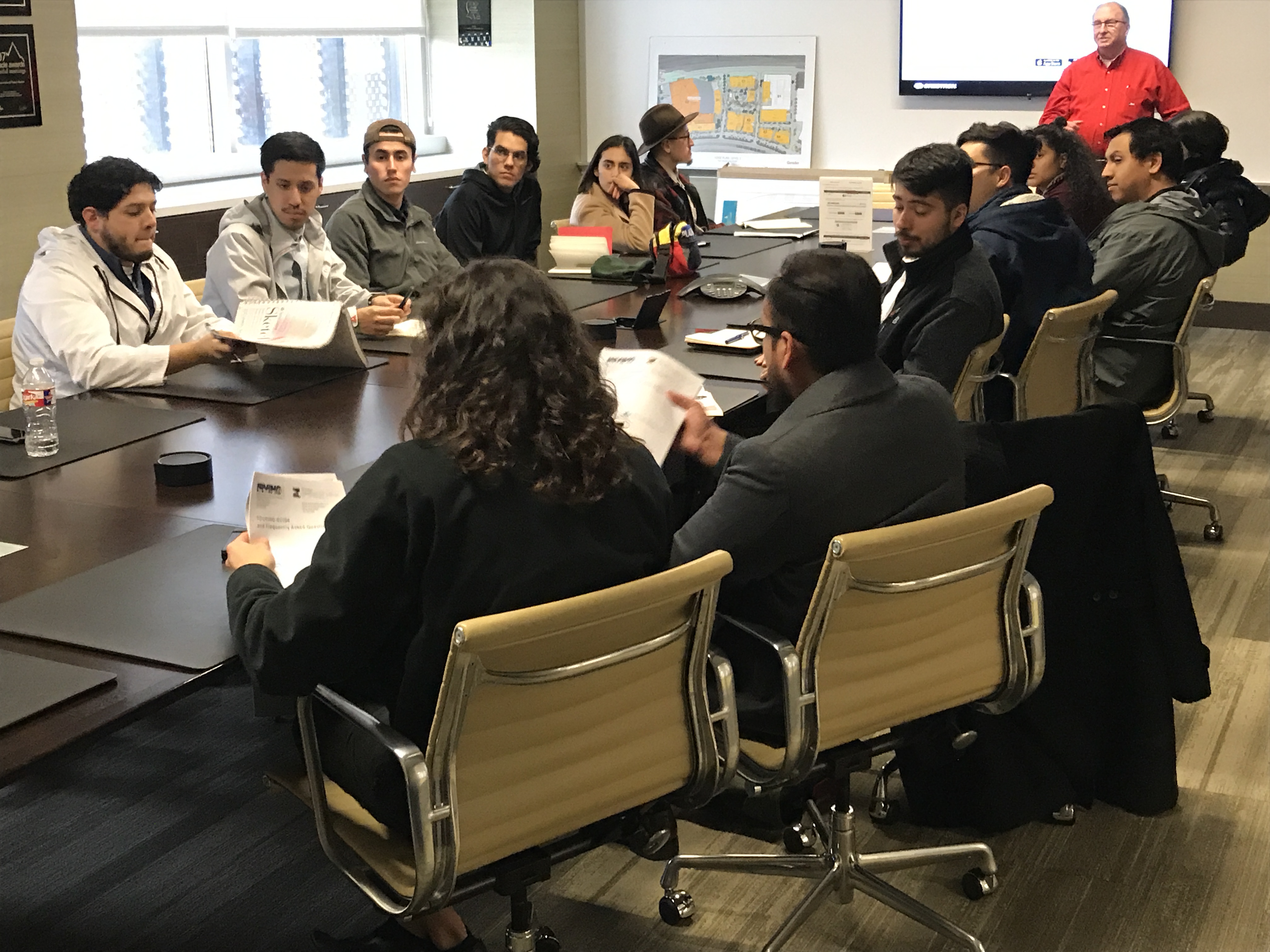
UTSA Students Visit DFW to Research Edge Cities
March 3, 2019
Fifty years after their emergence, how are Edge Cities performing? What possibilities exist to retrofit, renovate, or reimagine these environments? Could the retrofit of an Edge City like Las Colinas represent the next wave of American suburbia? If so, what would be the formal expression? What would be the program?
While visiting DFW, UTSA students stayed in Las Colinas and documented five sites across their design studio’s assigned twenty-acre site. The students also met with architects from Gensler, urban planners from Irving and Las Colinas, and visited iconic architectural and urban projects designed by Renzo Piano, I.M. Pei, Rem Koolhaas, Joshua Prince-Ramus, Thom Mayne, Louis Kahn, Tadao Ando, and Sasaki. Last but not least was an obligatory studio dinner at the legendary Deep Ellum BBQ joint Pecan Lodge!

Caine Discusses San Antonio Growth with a Reporter from Curbed
October 23, 2018
Ian Caine spoke with a reporter from Curbed.com about the rapid urban growth in San Antonio. The city is adding 66 new residents each day, 25,000 each year, and expects 1.1 million more people by 2040. Caine points out that while San Antonio’s rapid expansion offers tremendous economic and civic opportunities, today significant portions of the city still lack sidewalks and exhibit high rates of poverty and economic segregation. How will San Antonio handle the sudden transformation of its physical character, economic profile, and civic aspirations?

Image: Society of American Registered Architects (SARA).
UTSA Students Wins National Design Award from SARA
October 19, 2018
Recent UTSA graduates Estefania Barajas and Jorden Gomez received a National Design Award of Excellence from the Society of American Registered Architects (SARA). The SARA jury recognized the student project alongside winning entries from national design leaders like NADAAA, Perkins + Will, and Robert A.M. Stern. Barajas and Gomez designed the winning project, titled “Housing a Million,” as undergraduates in Ian Caine and Rahman Azari’s Committee on Technology and the Environment (COTE) studio during the fall semester of 2017. The COTE curriculum, nationally recognition by Architecture 2030, helps students utilize performance metrics to evaluate their design proposals. Congratulations to Stephanie and Jorden!


